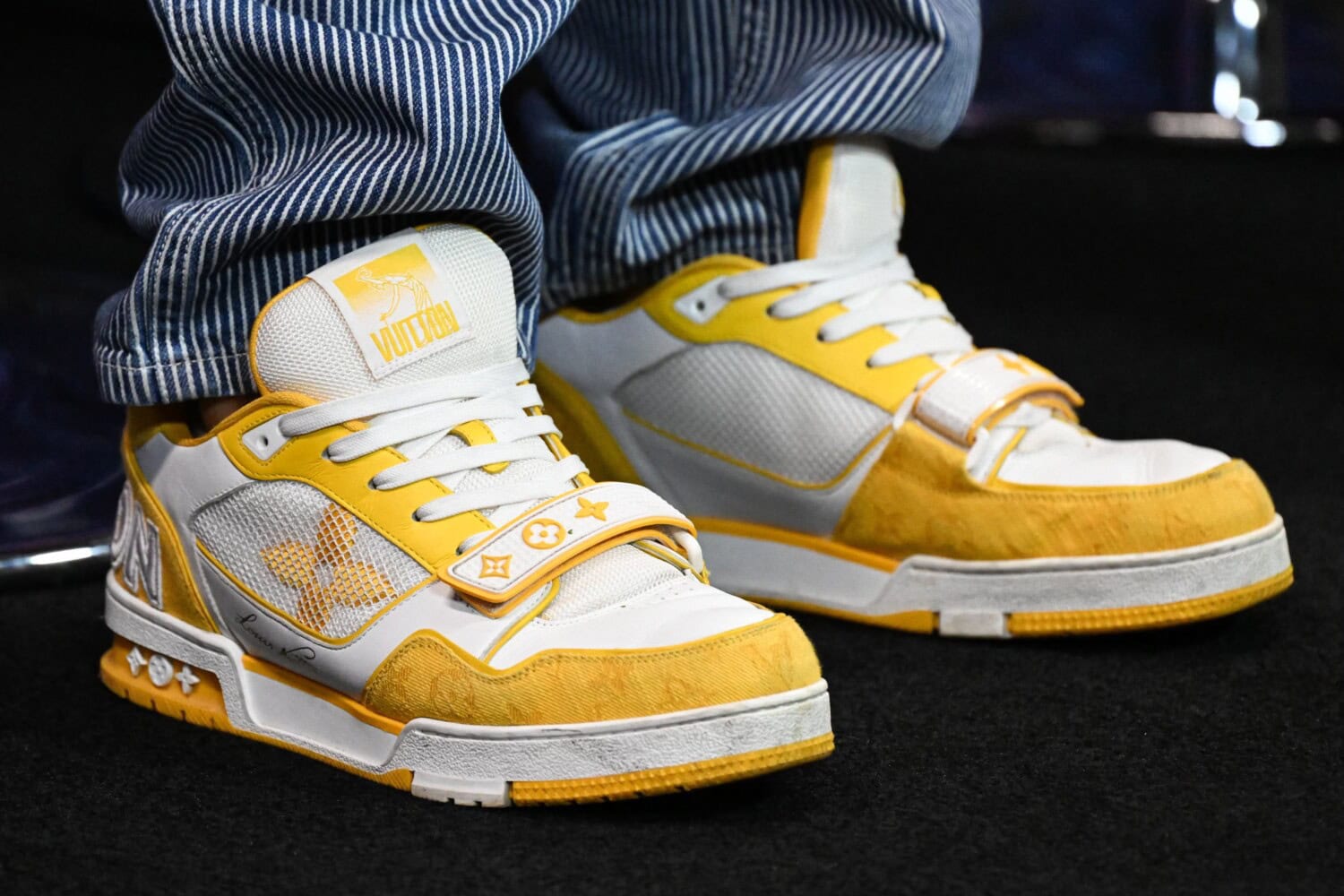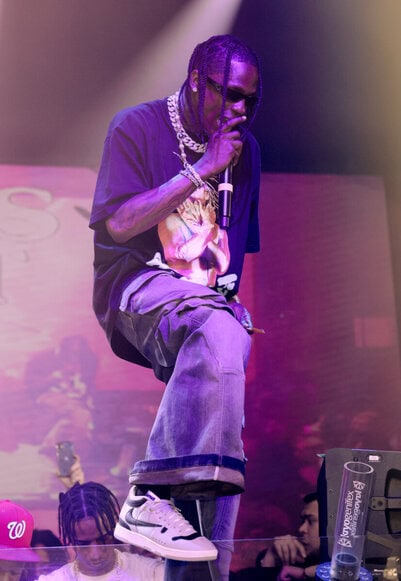Car culture is international, intersectional, and expensive. Boardroom explores why F1’s growing popularity makes it a premier place for brands to introduce upcoming sneaker releases with an aspirational twist.
Over the past decade, the footwear floodgates opened as sneaker culture found itself increasingly liberated beyond the insular days of NikeTalk and in-person swaps. Through a series of blockbuster collaborations between prestige brands and the biggest names in the cultural conversation, the dividing lines between high fashion, sportswear, and celebrity are every bit as blurred today as the resulting product is considered coveted.
Perhaps the same can now be said of other adjoining worlds, too.
Take as an example the weekend of May 7, 2023, when shoe stores sold slews of recent releases while NBA ballers debuted new styles of their signature sneakers on nationally televised playoff games for millions to see.
Despite “Elephant Print” Air Jordan 1s releasing at retail and King James taking a postseason series lead in unreleased PEs, however, the biggest footwear moments were going down in South Beach a good few miles away from the Kaseya Center or Sole Fly.
Eyes on Instagram and attendees around the Miami International Autodrome were privy to previews of sneaker heat more memorable than Fashion Week or NBA All-Star festivities.
The growing and glowing celebrity presence around Formula 1 auto racing and the Miami Grand Prix proved the perfect stage for J Balvin to break out his upcoming Air Jordan collaboration, a Travis Scott sighting in a John McEnroe getup, and even Tommy Hilfiger showing love to a pristine peer.
For those still unadulterated by the deep history between high-performance cars and sportswear brands, the juxtaposition may seem surprising.
For those well aware of the clout, connection, and crossover attached to the racing world, it makes perfect sense.
Speed Sells
Two things remained moving while the world was at a standstill.
In 2020, as the planet paused, interest around Formula 1 mounted thanks to the streaming success of streaming docuseries Drive to Survive.
Normally, it would take a generational talent or record-shattering moment to build buy-in for fans of a sport for which they were novices; instead, binge-watching the Netflix show sold personalities at a premium peak any traditional advertising campaign couldn’t match, suddenly spiking interest in Grand Prix racing among an American audience.
At the same time domestic viewers were being introduced to Lewis Hamilton in theatric fashion, they were remembering just how much they adored Michael Jordan.
A super-hit that arrested the attention of far more than just hoop fans back in 2020, The Last Dance landed with consumers of all ages and demographics, fueling online Air Jordan sales for months on end.
Defying convention, those days around the height of the COVID-19 pandemic were a catalyst for interest in both sneakers and motorsports.
Over the course of the 2010s, those two hobbies moved parallel along paths mostly separated by language and longitude. Collectible shoes serve as an accessible status symbol for fans of sport and style in North America, while racing-oriented brands signal a level of aspirational wealth that begins with $40 hats and veers towards $200,000 supercars tricked out after-market beyond their already-formidable specs.
Essentially, the Jumpman stands for something in Chicago just as the Ferrari’s prancing horse hits Florentines in the feels. As a status symbol, luxury labels like Louis Vuitton blur the aspirational apex of both ideals while brands of both the racing and sportswear sector look to bridge the gap.

In recent years, dreams of flight and speed have lived worlds apart.
However, that wasn’t always the case.
In the early ’00s, European rivals Adidas and Puma were famous for working with the likes of Porsche, Audi, Ferrari, and others. Driving shoes had both race track relevance and a runway feel, appearing much sleeker than basketball or Air Max models and appealing to an entirely different audience.
Though hoops and hip-hop fashion in America became more European and luxurious over the course of the ’10s, racing failed to resonate as an aesthetic import. No brand nor figure had the horsepower to drive the trend in US sportswear despite Lewis Hamilton being a Puma partner since 2013.
Now that the surge in popularity surrounding Drive to Survive has elevated Hamilton to hero status to American consumers and added domestic visibility to Max Verstappen and breakout personalities like Daniel Ricciardo, however, it’s possible driving shoes or racing collaborations will have more cachet in modern sportswear.
More certain? The biggest brands in fashion are using F1’s momentum to draft off their own opulent status.
Pole Position
What do Travis Scott, J Balvin, and Max Verstappen have in common?
They are all rich.
It may sound reductive, and it is. Each entity has built an international brand off God-given talent, hard work, and smart partnerships. While the power players each compete in the lanes of their individual crafts, the F1 Miami Grand Prix has ascended as America’s global gala of wealth, style, and influence. In turn, it’s a place that’s additive for all to appear at.
Higher brow than the Super Bowl and more of a mixer than the Met, F1 Miami is equal parts party and high-level networking. The heat of the race track and the allure of red-carpet cameras make it the perfect platform for luxury sportswear and designer drops to literally melt together.
Because of this, the perceived value of an Air Jordan collaboration is higher if it debuted on an A-lister wearing a six-figure Patek Philippe than an All-Pro putting up a triple-double in a team-issued uniform.

That’s because fashion is the sport that all athletic brands are currently competing in. While horsepower and Italian engineering may be the key components to cutting time on the track, clout remains the foremost driver in high-heat shoe sales.
Whether a wearer, collector, or resale entrepreneur, the perceived value of a product increases not just through limited allocations but by being positioned next to celebrity talent, expensive outfits, and rooms most can’t get into.
Because of this, F1 Miami was the perfect starting line for both the J Balvin x Air Jordan 3 and Travis Scott x Nike Air Mac Attack.
Debuted by both namesake collaborators on the red carpet or on stage, the shoes signify the point of cultural convergence that Formula 1 has become — and the massive amount of eyeballs and dollars that are driving all attached industries.
Chapter 1 of each shoe’s story now begins at a gathering of influencing no different than an art exhibit, raising the roof on intrigue from outsiders and aftermarket price for the affluent in attendance.
In a sense, F1 is appealing to country club pockets in hedge fund depth while offering the cool cachet of peak Art Basel. It’s a hotbed for the mingling of various markets and an easy-if-not-unexpected positioning play for the $75 billion sneaker industry.